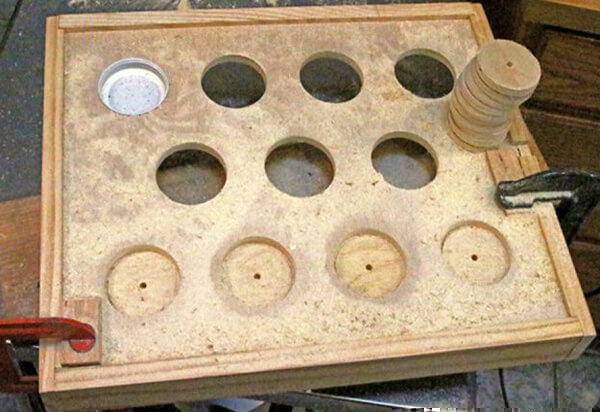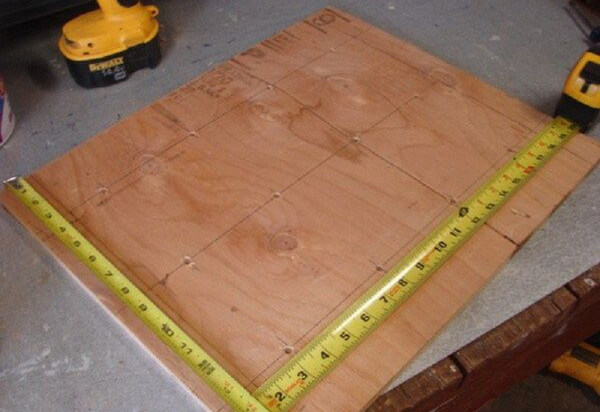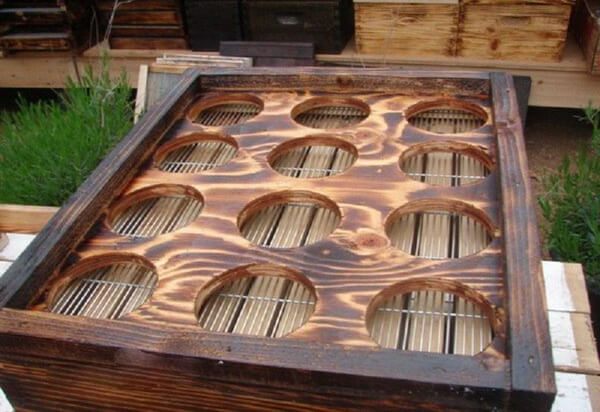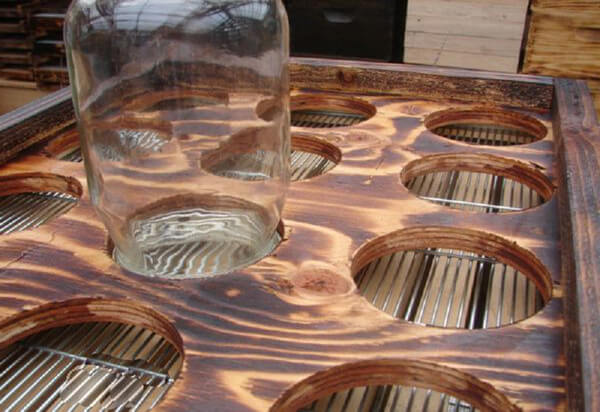Support your nearby bee society by creating one of these kinds of DIY bee hives and enjoy the positive aspects too, your personal source of honey at your fingertips. The dropping of bee populations all over the globe has already been a enormous fear to entomologists, as bees provide such a important element in our food chain, the disappearance of them completely would certainly be devastating for the animal kingdom and human beings as well.
The good part is that you can do your bit to help your local bees, by building them a place to hang out in in your own garden, this homemade hive is even suitable for those with limited ourdoor space.

To start with, you will need a pre-made bottom bee hive section, which are available from amazon (here). Then you also need one piece of 2″ x 12″ x 6′ wood (cut two pieces to 22″ each for the sides); one piece of 2″ x 12″ x 6′ wood (cut two pieces to 18″ each for the front and back); one piece of 1″ x 1″ x 6′ wood (cut two pieces to 22″ each for the top frame’s left and right sides); one piece of 1″ x 1″ x 6′ wood (cut two pieces to 18″ each for the top frame’s front and back sides); one piece of thick plywood cut to 16″ x 20″; 12 big mouth quart-sized jars for the honeycomb and one box of 1″ wood screws.

The pre-made bottom of the hive is doing the hard work from this point onwards, the wood is simply here to act as a frame.
For the 16″ x 20″ piece of plywood, measure and mark where you want your 12 holes to be. Using a hole saw, drill your holes, which should each be 3 1/2″ in diameter, test your jars at this point to make sure they fit snug.

Make the top by screwing together the four pieces of 18″ and 22″ plywood.

See also: 17 Useful Hacks How To Use Baking Soda For The Garden & The Kitchen
After sanitizing, screw the jars downwards into the pre-cut holes, this will be where the bees will live. Make sure the jars fit tightly and don’t wobble around.

Place starter strips or empty combs into the jars and await for the bees to start their new colony.

You will soon have jars full of honey produced by a swarm of bees you harvested yourself, helping the environment along the way.
 Freshsein
Freshsein